DesRon 48
World War II Destroyer Squadron 48
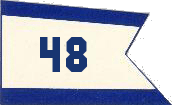

During World War II, American destroyers in the Pacific were organized into several levels of sub-units under CINCPAC, the commander in chief of the Pacific Fleet. A typical task force with four aircraft carriers might employ 16 destroyers, so the basic operational destroyer unit was a division, also known as DesDiv, with four or five destroyers; typically, two divisions formed a squadron, or DesRon.
| Unit | Full Name | Strength | Rank of commanding officer |
|---|---|---|---|
| ComDesPac | Commander, Destroyer Force Pacific | 2 flotillas | Rear Admiral |
| ComDesFot | Commander, Destroyer Flotilla | 6 task flotillas | Rear Admiral |
| ComTaskFlot | Commander, Task Flotilla | 68 squadrons | Commodore |
| ComDesRon | Commander, Destroyer Squadron | 136 divisions | Captain |
| ComDesDiv | Commander, Destroyer Division | 8 or 9 destroyers | Captain or Commander |
Destroyer division composition could be quite fluid, with ships coming and going for special missions, maintenance, fleet errands, training and shore leave. Reports frequently mention squadrons and divisions minus one or two ships and plus one or two ships. For example, at the Leyte invasion DesRon 48 lacked Bullard but added Gansevoort. In the Philippines, Abbot frequently operated with DesRon 21.
DesRon 48 comprised DesDivs 95 and 96. DesDiv 95 usually consisted of Abbot, Erben, Hale, Stembel (the DesRon 48 flagship) and Walker.
DesDiv 96 comprised Black, Bullard, Chauncey and Kidd.
That’s nine Fletcher-class destroyers and nearly 3,000 sailors, roughly the size of an army brigade.
The commanding officers of DesRon 48 during World War II were Captains J.T. Bottom, W.J. Marshall and H.H. Henderson; each simultaneously commanded DesDiv 95. The commanding officers of DesDiv 96 were Commanders Chester E. Carroll (formerly skipper of Abbot), T.H. Kobey and L.C. Chamberlin. Individual destroyers usually rated a commander as skipper, although often a lieutenant commander would take command and be promoted to commander within a few months.
Commanders of squadrons and divisions could hoist distinctive flags. ComDesRon rated a white swallow-tailed broad pennant trimmed top and bottom by a blue border, with the large numerals 48 in the middle. ComDesDiv rated a burgee trimmed in red, with the numerals 95 or 96.
The squadron flagship, which was usually Erben or sometimes Stembel in DesRon 48, was also known as the “squadron leader.”
The USS Kidd/DESRON 48 Association, founded in 1948, organized 62 annual reunions for their destroyer shipmates, including post-war crewmembers who were not part of DesRon 48. Kidd survives as a museum, moored in the Mississippi River at Baton Rouge, Louisiana.
At the final annual meeting and reunion, June 8 to 11, 2010, in Springfield, Illinois, the DesRon 48 association members voted to dissolve the organization. Dissolution was completed on August 12, 2010, and the web site, desron48.org, was taken down in 2014 or 2015.
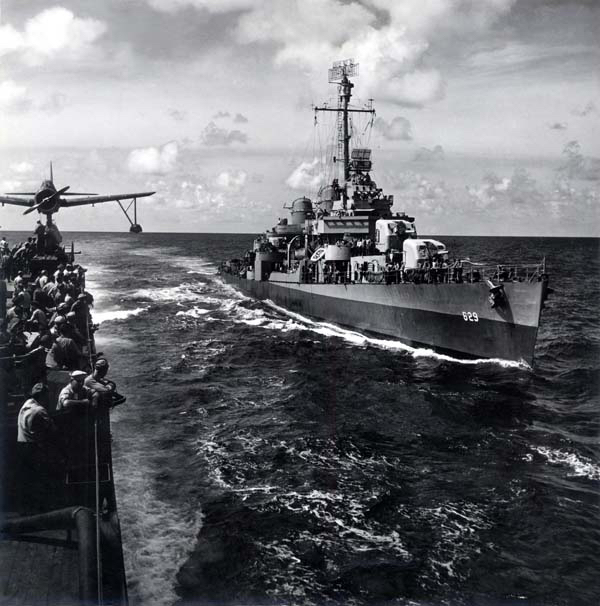 Abbot |
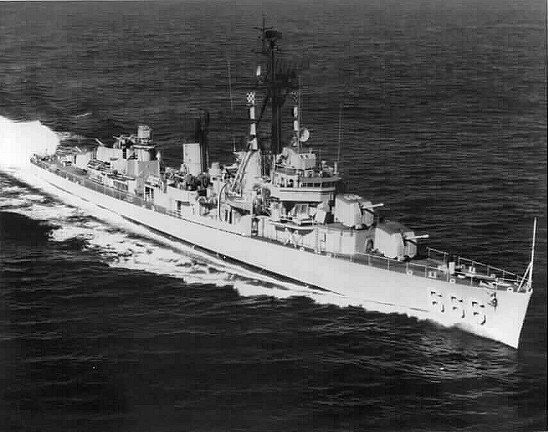 Black |
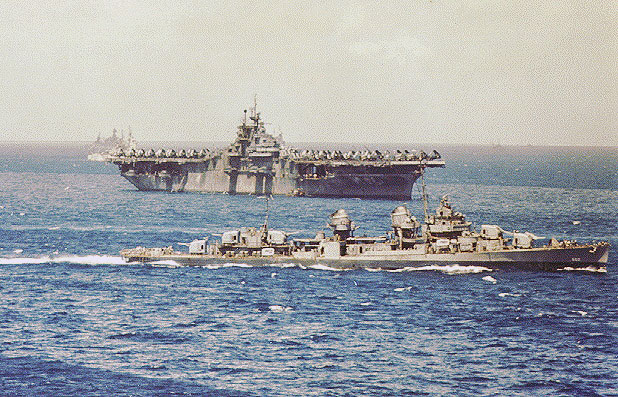 Bullard |
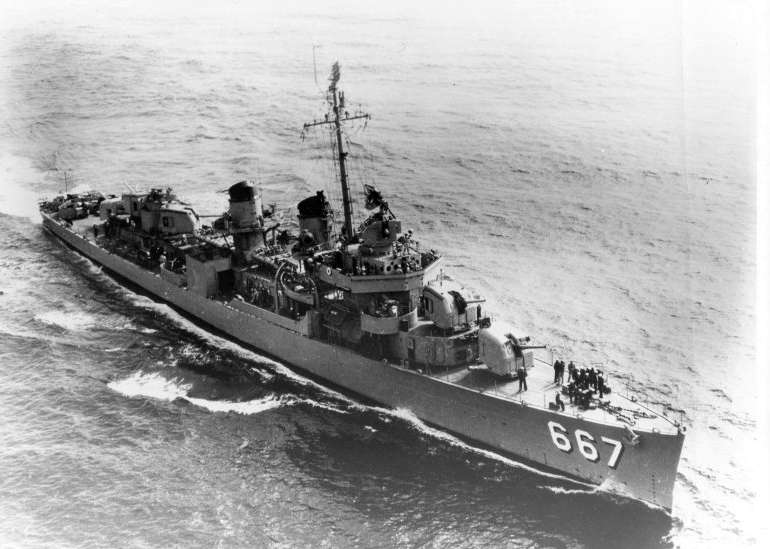 Chauncey |
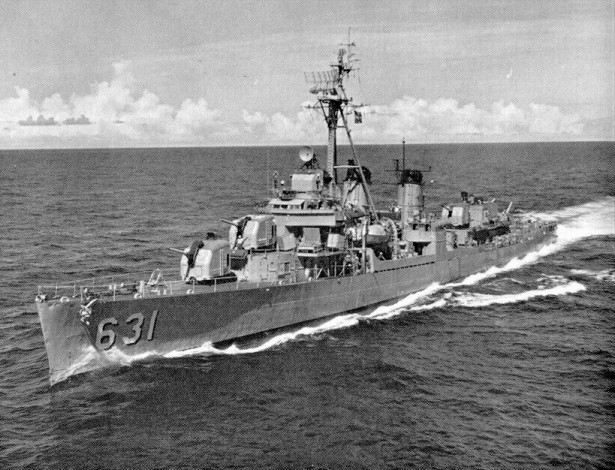 Erben |
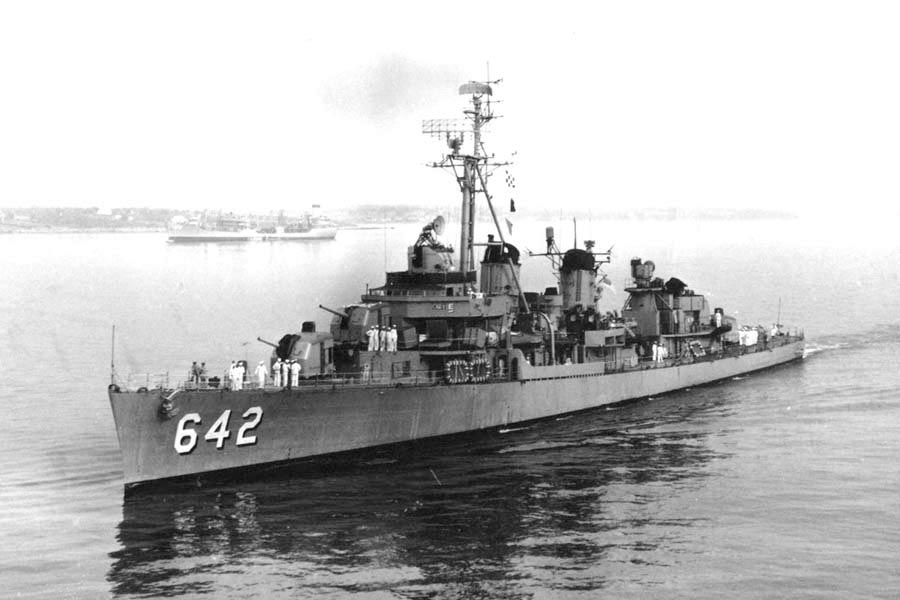 Hale |
 Kidd |
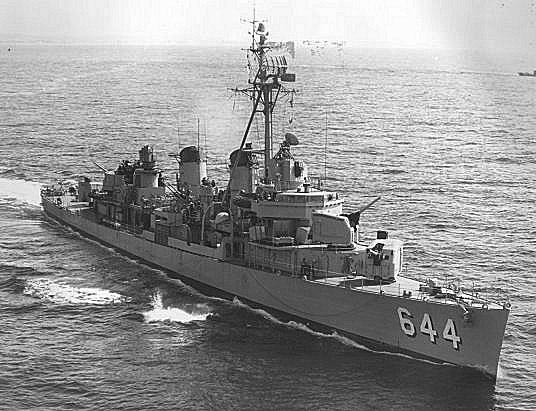 Stembel |
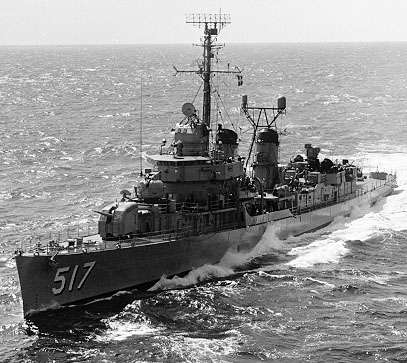 Walker |
| Click on an image to see ship’s brief history | ||